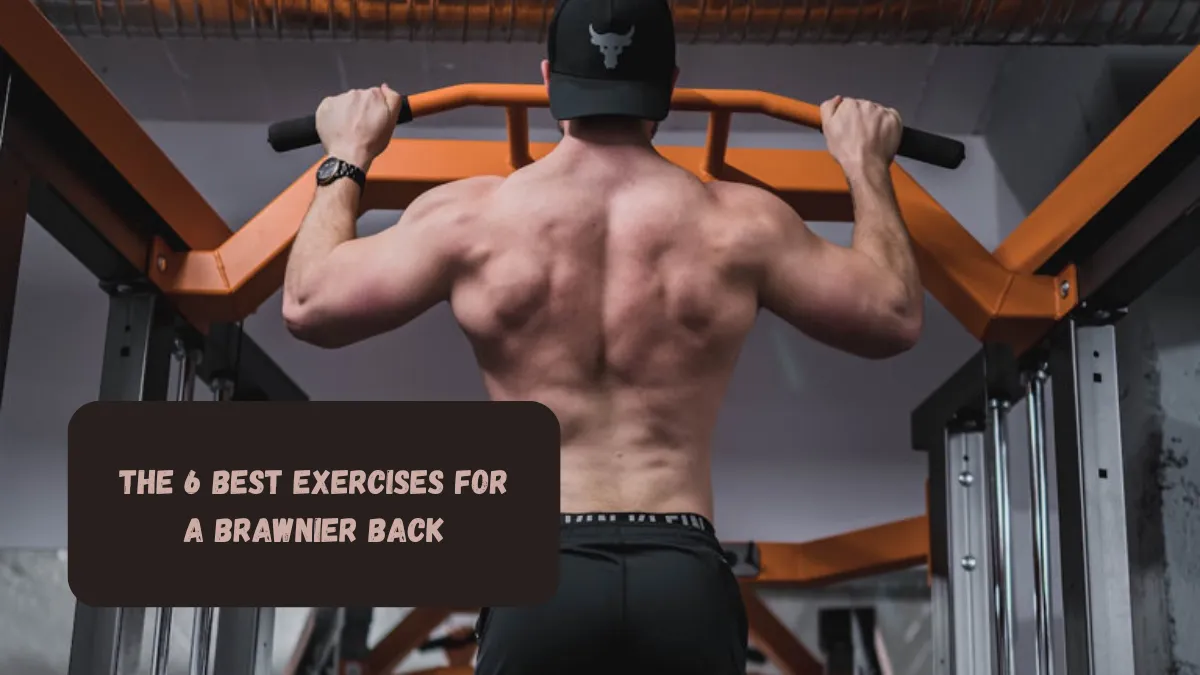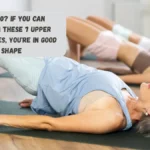A wide, well-defined back is an important part of having a well-rounded body. But that’s not the only reason to work out your behind—it’s also a key way to improve your balance, lower your risk of back pain, and keep you from getting hurt. Alex Corbett, PT, DPT, a physical therapist at Breakthrough Physical Therapy, says, “When people come in with shoulder pain, the first thing we look at is how their back is developing.”
Not only does working out the back help it grow, but there is also a lot of muscle tissue there. “When you stress all that muscle tissue, all the other benefits of strength training, like hormone production and an increased basal metabolic rate, are amplified,” says Luke Carlson, founder and CEO of Discover Strength.
We don’t always pay enough attention to back movements. “In our habit, we work out the muscle groups that we can see in the mirror.”Most guys work on their biceps more than their triceps, their pecs more than their back, and their quads more than their hamstrings.” As he goes on, though, “There’s so much we can do with the back for most people.” Even if someone has trained regularly for years, they probably haven’t trained their back as much as they could have.
1. Pullover
The pullover is probably the single most magical exercise in all of strength training, and yet most people have never done a pullover before.” He also says that the pullover machine has become less popular over the past few years. “That’s all anyone did to build their lats in the 1970s, 1980s, and 1990s,” he says. “We got away from it, but it’s really the magic back machine.” The sweater is great because it works your lats directly and keeps you from having to use supporting muscles that might give out before your back. “
There are limits to almost every other exercise we’re going to talk about,”. “Even chin-ups, rows, and pull-downs.” We can’t do as much because our biceps and wrists aren’t as strong as our back muscles. Because of this, when we get tired or our muscles give out, we almost always fail because our biceps or wrists are the weak link. You can focus all of your work on your lats because the sweater goes around those weak spots.
How to do it:
Take a seat in a pulldown machine.
Make sure that the axis of rotation of the machine, which is where it pivots, lines up with the axis of rotation of your shoulder.” “That just makes sure the seat is the right height for you.” The points where your shoulder and the machine move together should line up.
Hold your core tight and push your arms down and back into the pads while keeping your hands loose.
At the top of the move, stop for a count and then slowly start moving back to the starting position. That’s one rep.
For the trainer:
If you don’t have a pull-over machine, you can use a bar instead, though it will work a little less well. “You would lie on your back with your arms stretched out above your chest and a dumbbell in each hand.Then you bring your arms back behind your head.” Of course, because this version includes your hands and wrists, you miss out on some of the best benefits of the pull-over machine for isolating your core.
It can also be hard to find the right weight. “When it’s above your chest, that dumbbell will feel so light,” he says. “But when you bring it back down, it will feel really, really heavy.” “It’s not great, but you should do it if you don’t have a machine.”
2. Chinup
One of the best and most useful workouts you can do for your upper back is to lift your body weight up to a bar. People in the gym like to argue about the pros and cons of different grips, but it doesn’t really matter. “The study makes it pretty clear: it’s so damn similar,” he says. “It’s the same whether you have a narrow grip, a wide grip, your palms facing you, your palms facing away, or your palms neutral.”
But if you want to focus on your lats, the standard chin-up with a supinated grip is better for a few reasons. This is the only grip that naturally places your hands at the best distance apart to work your lats. Also, the supinated grip works the biceps muscle more than the pronated or neutral grips. This is why you can always do more chin-ups than pull-ups. Not only will your biceps get bigger, but you can also work out your back for longer before your arms get tired.
How to do it:
Place yourself right under a pull-up bar. For those who can’t get to the bar with just a short hop, set up a box or platform. It will also help you get back down after the set.
Hold the bar with your hands about shoulder-width apart and your palms facing down. Your arms should be almost straight out from your body.
As you hang from the bar with your legs crossed behind you and your knees slightly bent, pull yourself up until your chin is just above it.
Stay in this place for one second. Then, make your way back to a dead hang slowly and carefully. That’s one rep.
For the trainer:
That when you pull yourself up, leaning back a little can help you focus on the lats more. “You’ll notice that people lean back a bit,” he says. “When you lean backwards, you’re pulling your body in a more horizontal direction, which brings more attention to your upper back.”
3. Seated Row
If I had to choose,”a chest-supported row, either with a cable or a regular machine.” These three moves all work the lats, and this one does so just as well as the lat pull-down machine. However, that this one focuses on the trapezius, rhomboids, and some of the smaller muscles in the upper back more than the others.
You can do the sitting row on a number of different types of machines, or you could use a wire pulley to do it on the floor. to find a machine with a chest pad to give you extra support because the key is to keep the body from swinging or moving too much. He says that a machine where you lean against a pad is a great way to do it because you shouldn’t rock forward or backward.
How to do it:
Place your bottom on the chest pad while sitting on the bench of a cable station.
Put your arms out in front of you so you can grab the handles. “They should be just about there for you to reach. “That lets you get the full extension right at the start of the motion.”
Your core should be tight, and your chest should stay still as you pull the handles toward you.
At the top of the rep, take a moment to pause, and then slowly move back to the starting position. That’s one rep.
For the trainer:
This seems like a simple back exercise, but there’s a small but important shoulder movement you need to pay attention to. He says, “As you pull the handles backwards, you should squeeze your shoulder blades together.” He then says, “At the other end of the rep, you should actually let your shoulder blades fully protract and go forward.” “People often want to hold those shoulder blades back and keep them still.” But if you don’t fully extend, the middle and upper back won’t get stretched.
4. Reverse Fly
Even though the posterior deltoid is part of your shoulder, the rear delts can really change the way your back looks. There are three parts to the shoulder, according to Carlson. The anterior deltoid is in the front, the main head of the deltoid is the thick part in the middle, and the posterior deltoid is in the back. “When you look at someone’s back, this muscle is so important to build up.”
As you look at their back, you might think, “Wow, they have a great back!” But you’re also seeing their rear deltoids. That being said, if you don’t already do the reverse fly on back or shoulder day, you can really improve your skills here. According to Carlson, most people don’t work out their rear delts enough because they do a lot of chest and arm pressing exercises that don’t really work their rear delts. “So isolating it with a reverse fly like this can have a pretty big effect on someone’s body and the way their upper back looks.”
How to do it:
Set yourself up in a reverse fly machine and make sure the seat has enough support for you.
Drive your arms back as far as you can while keeping your core tight and your thighs pressed against the pads. Pause for one count at the top of the rep.
Controlledly move your arms back to where they started. That’s one rep.
For the trainer:
You can still do the workout with just a bench and some dumbbells if you don’t have a forward fly machine. “The most common way to do it [without a machine] is to sit at the edge of the bench, lean way forward, and then lift your arms out to your sides,” explains Carlson.
5. Shrug
People in weight rooms all over the world call the trapezius muscle “traps.” It’s the only muscle on your back that people can see from the front. You don’t have to work out your traps so much that it looks like your body is adding extra shoulders. But focusing on your traps can make your back look better. She says, “This is such a big muscle, and there’s just so much muscle tissue that can be built there.”
That the shrug is one of the best ways to work on the top, and the sitting cable row already does a lot for the middle and lower traps. You can make it even more useful by making a small change to the form. “If you pull your shoulders back a little more, you can hit the upper traps better,”. “So, instead of pulling your shoulders straight up and down, pull them up and diagonally so the shoulder blades are pulled backwards.”
How to do it:
Hold a barbell in each hand at your sides and stand up straight.
Squeeze your shoulders up toward your head while keeping your arms straight and holding tension in your arms.
When you reach the top of the rep, hold the contraction for one count. Then, slowly move back to the starting position.
At the bottom of your range of motion, give yourself a chance to stretch. That’s one rep.
For the trainer:
“This is one of the classic exercises where almost everyone uses too much weight,”. “By ‘too much weight,’ I just mean that they use so much weight that they can’t move very freely.” If someone really wants to work on their traps, I would tell them to cut the weight in half and raise their shoulders. As high as you can go. Make a rigid hold look really bad there. For the first few reps, the weight may feel light, but once you get that good range of motion, your trap growth will be better all around.
6. Back Extension
The lower back isn’t as noticeable as the lats or traps, but that doesn’t change how important it is. The abs you see in the mirror are only a small part of your core. About half of your core is on your back. According to Dr. Corbett, the erector spinae muscles in your lower back run parallel to each other down both sides of your spine. The pain in their backs is one reason we know so much about them.
As you might expect, there’s a huge amount of scientific research on this subject, since we know that strengthening the lower back is a great way to reduce lower back pain.” “This has been studied by doctors a lot, and the back extension is a great way to work those muscles.” Some people at your gym may just call it the back extension, but Carlson is talking about the “Roman chair” back extension. In college, you may have used one with a plate on your chest. “That one is pretty clear from the research: it’s the best.”
How to do it:
Use a Roman chair machine and place your feet on the platform. Rest your legs and hips on the main pad.
Hold a plate against your chest, put your hands on your hips, or put your hands by your head. Bend at the hips and slowly lower your body to the floor. Right here is where you start.
Hold your core tight and lift your spine until it lines up with your lower body.
Take control and slowly move back to the starting spot. That’s one rep.
For the trainer:
People try to work out their backs in a lot of different ways, but most of those exercises probably work the glutes more than the back.” That’s right, you should have your feet pigeon-toed, with your toes together and your heels out. That will take the hips out of the picture and put more attention on the lumbar flexor muscles.




